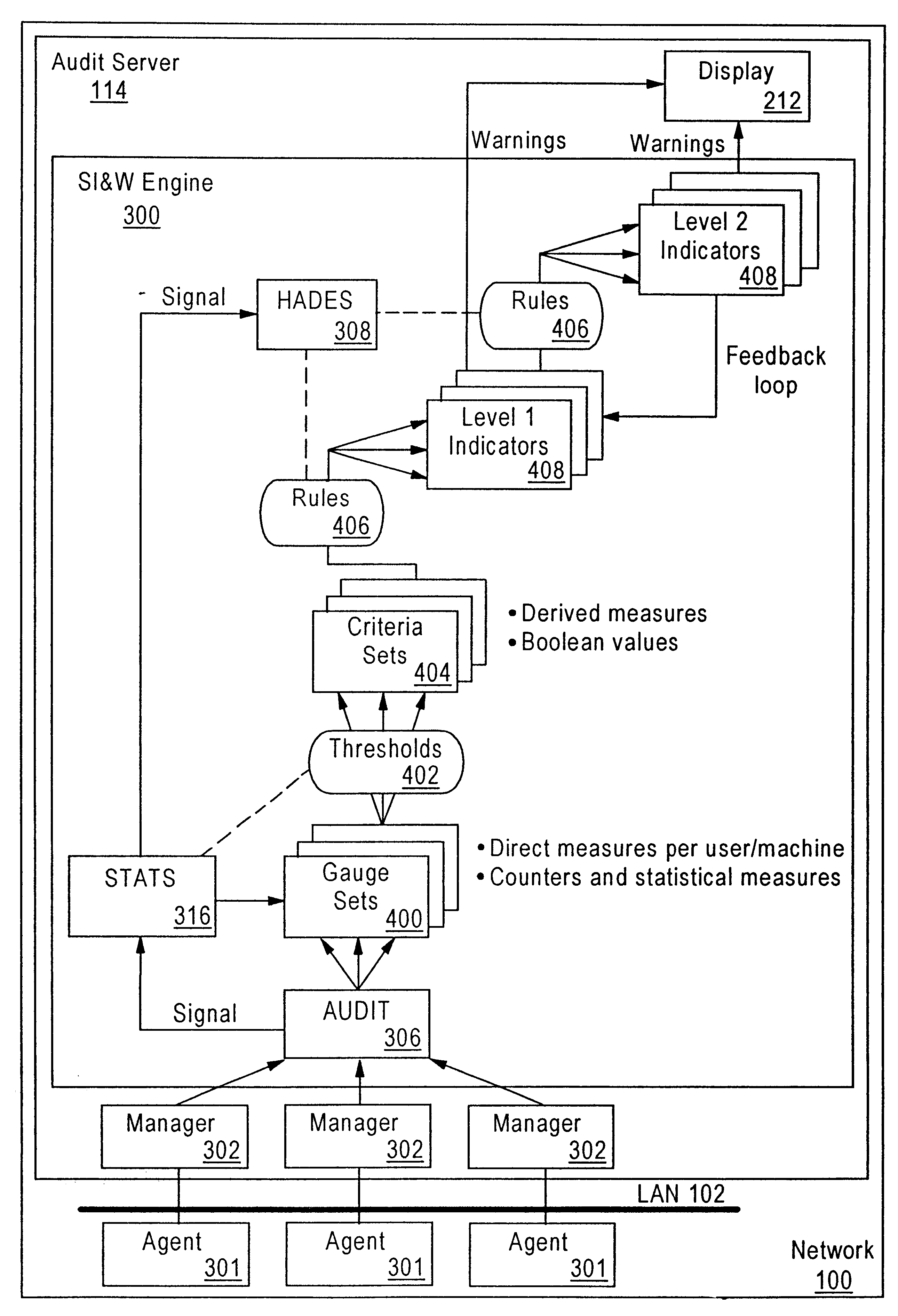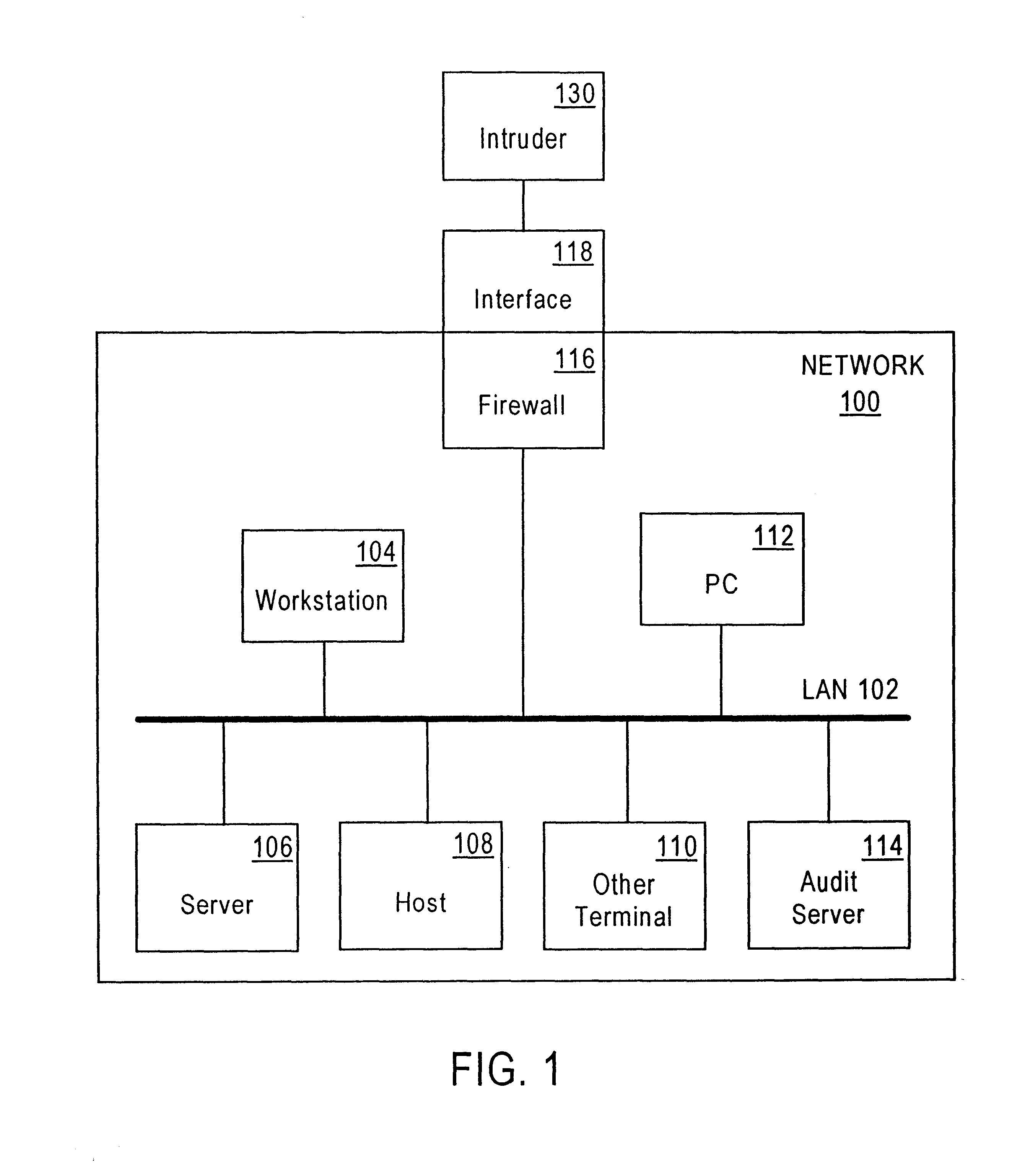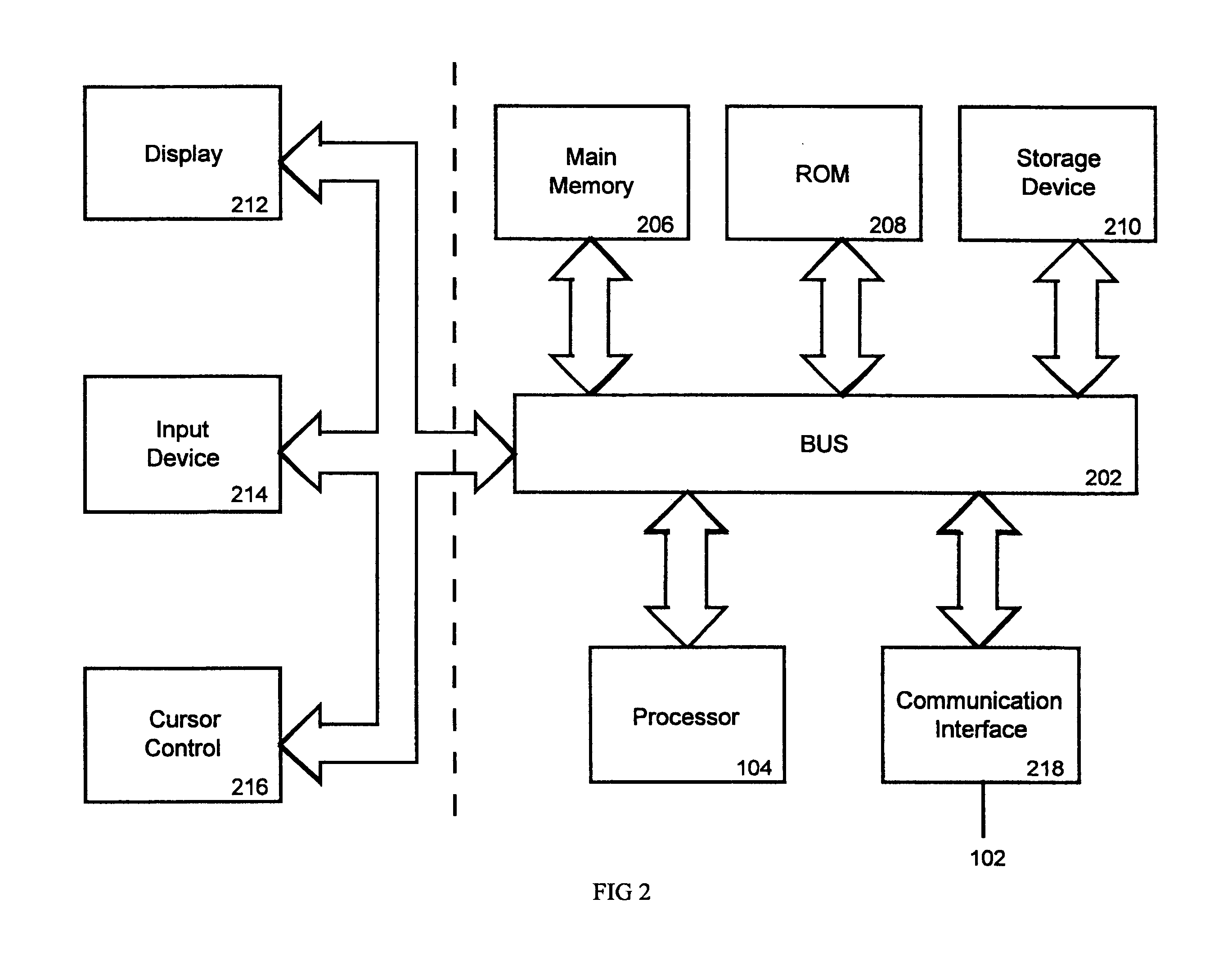Method and system for detecting intrusion into and misuse of a data processing system
- Summary
- Abstract
- Description
- Claims
- Application Information
AI Technical Summary
Benefits of technology
Problems solved by technology
Method used
Image
Examples
Embodiment Construction
The present invention is usable in conjunction with an audit reduction system described in the related U.S. Pat. No. 6,134,664, issued Oct. 17, 2000, entitled “Method and System for Normalizing Audit Trail Records Received from Heterogeneous Sources” assigned to the instant assignee, and incorporated by reference into this specification in its entirety. The present invention is also usable in conjunction with a system described in U.S. Pat. No. 6,408,391, issued Jun. 18, 2002, entitled “Dynamic System Defense for Information Warfare” assigned to the instant assignee, and incorporated by reference into this specification in its entirety.
A method and apparatus for intrusion according to the present invention are described. In the following description, for purposes of explanation, numerous specific details are set forth in order to provide a thorough understanding of the present invention. It will be apparent, however, that the present invention may be practiced without these specific...
PUM
 Login to View More
Login to View More Abstract
Description
Claims
Application Information
 Login to View More
Login to View More - R&D
- Intellectual Property
- Life Sciences
- Materials
- Tech Scout
- Unparalleled Data Quality
- Higher Quality Content
- 60% Fewer Hallucinations
Browse by: Latest US Patents, China's latest patents, Technical Efficacy Thesaurus, Application Domain, Technology Topic, Popular Technical Reports.
© 2025 PatSnap. All rights reserved.Legal|Privacy policy|Modern Slavery Act Transparency Statement|Sitemap|About US| Contact US: help@patsnap.com



